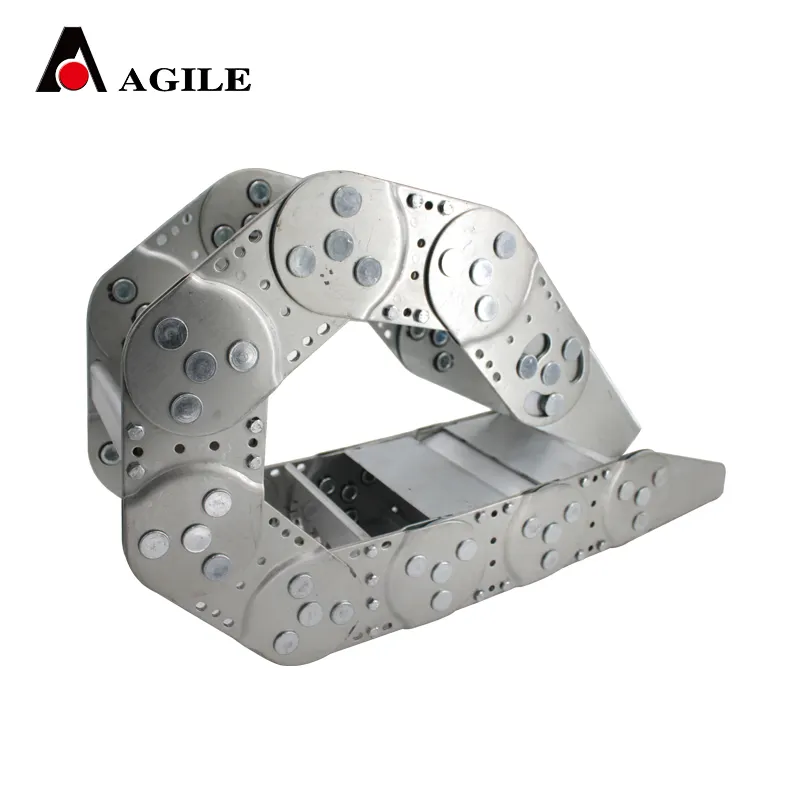Cable and Hose Management Solutions for Improved Efficiency and Organization
Understanding Cable and Hose Carriers Essential Components for Modern Machinery
In the realm of industrial and manufacturing applications, the importance of cable and hose carriers (often referred to as energy chains) cannot be overstated. These integral components serve as protective conduits for various electrical cables, pneumatic hoses, and hydraulic lines, ensuring functionality and safety in a dynamic environment where machinery is in constant motion. As we explore the fundamental aspects of cable and hose carriers, it becomes clear why they are essential for modern machinery.
What are Cable and Hose Carriers?
Cable and hose carriers are structured systems designed to organize and guide moving cables and hoses, minimizing wear and tear while enhancing performance. Constructed from versatile materials such as plastic or metal, these carriers come in various shapes and sizes, tailored to fit the specific needs of different applications. They offer significant advantages, including reduced downtime, improved safety, and extended lifespan for cables and hoses.
Key Benefits of Cable and Hose Carriers
1. Protection Against Damage One of the primary roles of cable and hose carriers is to protect cables and hoses from mechanical stress, abrasion, and environmental factors. In a working environment where equipment frequently moves, the risk of tangling, pinching, or crushing is real. Carriers create a secure pathway that helps prevent these issues, allowing the cables and hoses to function without risk of damage.
2. Enhanced Organization Cable and hose management can quickly become chaotic, especially in large machinery or manufacturing setups with numerous cables and hoses. Energy chains keep these components neatly organized, reducing the likelihood of mix-ups and facilitating easier inspections, maintenance, and replacements.
3. Improved Mobility Cable and hose carriers are designed to allow for smooth movement of the cables and hoses as machinery operates. This flexibility is critical in applications where automation and high-speed operations are prevalent, as seamless movement can prevent unnecessary strain on connections and prolong their operational integrity.
cable & hose carriers

4. Customization Different applications call for different types of cable and hose carriers. Manufacturers offer a range of customizable options, allowing engineers to choose carriers that suit the specific dimensions, load capacities, and environmental conditions of their applications. There are heavy-duty options for large industrial machines and lighter versions designed for smaller robotic systems.
Applications Across Industries
Cable and hose carriers are utilized across various sectors, signifying their versatility and crucial role in modern machinery. In the automation and robotics industry, they manage cables and hoses in robotic arms and conveyor systems, ensuring smooth operation without hindrance. In the construction industry, they help organize hydraulic hoses and electrical cables in mobile machinery, providing durability and flexibility on rugged terrains.
Furthermore, industries such as aerospace, automotive, and telecommunications implement these systems for their stringent standards in cable management and safety. As machinery evolves and automation becomes a driving force in manufacturing, the need for effective cable and hose carriers will only increase.
Installation and Maintenance
While cable and hose carriers are robust and designed for longevity, proper installation and maintenance are vital for optimal performance. Ensuring that carriers are correctly sized and installed eliminates potential issues such as kinking or unsupported sections that can lead to cable damage. Regular inspections and cleaning also help identify wear before it leads to bigger problems, ensuring a seamless operation.
Conclusion
Cable and hose carriers play a pivotal role in the efficiency and safety of modern machinery. By protecting critical systems from damage, organizing complex arrangements, and accommodating the dynamic nature of industrial environments, these carriers are indispensable in today’s fast-paced manufacturing landscape. Investing in quality cable and hose carriers translates to enhanced machinery performance and reduced operational costs, underscoring their importance in the continued evolution of industrial technology.








